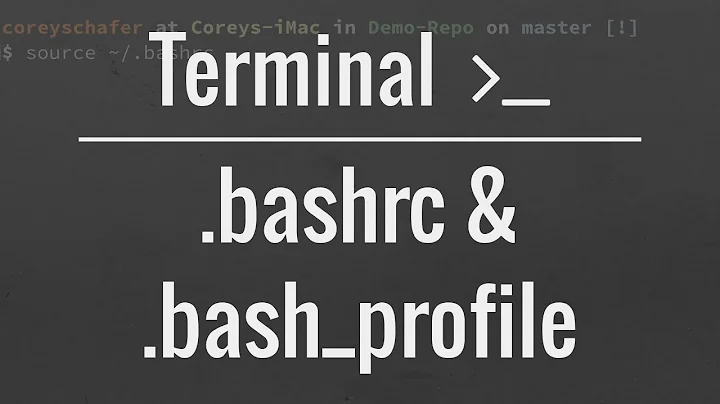Why .profile (and not .bashrc) appends ~/bin to path?
Solution 1
~/.bashrc and /etc/bash.bashrc are run every time an interactive bash shell is started.
In contrast, ~/.profile and /etc/profile are run every time any login shell is started. So it does not have to be a bash shell, but it does have to be a login shell (and many bash shell instances are not login shells).
- A
bashshell is a shell where the shell program that provides it isbash, rather than some other program, such asdash. - A login shell is a shell that is started automatically as a consequence of logging in, to provide the user interface (graphical or command-line) for the login. When a login shell is exited, the login terminates.
Therefore, putting a commend that appends entries to PATH in a bashrc file would:
Do nothing when the shell is not
bash, which is often the case. For example,PATHwould be unmodified when you're in a graphical login session. Remember,PATHis not just used by command-line programs.Append it over and over again in the presence of nested
bashshells. So, if you start a shell within a shell--which is very common, for a variety of reasons--then you'll have multiple~/binentries stacked onto yourPATH. This makes thePATHenvironment variable difficult to read, and sometimes also decreases performance.
These would be undesirable. Thus it would be wrong to put this in a bashrc file; it really belongs in ~/.profile. ~/.profile is the right place for:
# set PATH so it includes user's private bin if it exists
if [ -d "$HOME/bin" ] ; then
PATH="$HOME/bin:$PATH"
fi
Non-login shells have login shells (or something that behaves like a login shell) as their parent, and inherit most of their environment variables, including PATH, from this login shell. So putting path-modifying commands in ~/.profile requires that you log out and back in for them to be effective, but it affects the environment of non-login shells too (as well as the environment for programs that are not shells, since every program gets its own set of environment variables--called its "environment"--inherited from its parent process).
Solution 2
It's because traditionally environment variables go only in /etc/profile or .profile. The bashrc file is for things like aliases, prompt settings, shell options and so forth (i.e. things that relate directly to the shell).
Related videos on Youtube
borges
Updated on September 18, 2022Comments
-
 borges almost 2 years
borges almost 2 yearsSince
.bashrcis more "generic" (in the sense that.profilesources it), why "include~/binto path" procedure is not inside.bashrc? Why the user would not want it in a non-login shell? (Especially nowadays, where non-login shells are more common*.)I know I can manually do such change, but I want to know if there is a reason.
*can't prove it, but I think that is the case.
-
Eliah Kagan about 11 years@borges If the default configuration doesn't work well for you, you should feel free to change it. (It's your computer, after all. Or at least your account.) But this sounds like a one-time thing. That is, is sounds like your private
bindirectory didn't exist when you logged on, and that you have created it during this login session. If you log out and back in, it will be in yourPATH. Since creating your privatebindirectory is something that only needs to be done once, this is a one-time inconvenience.




